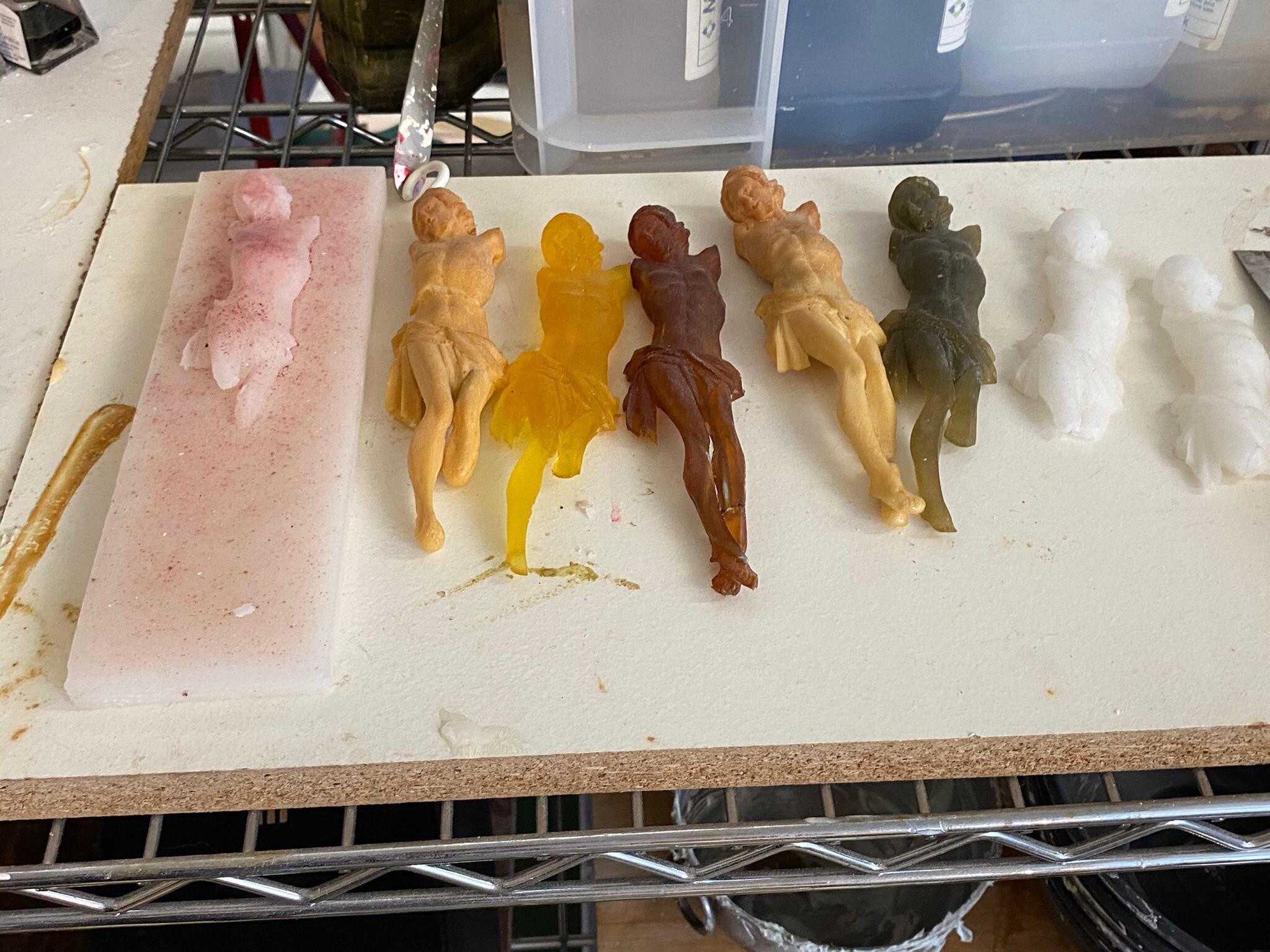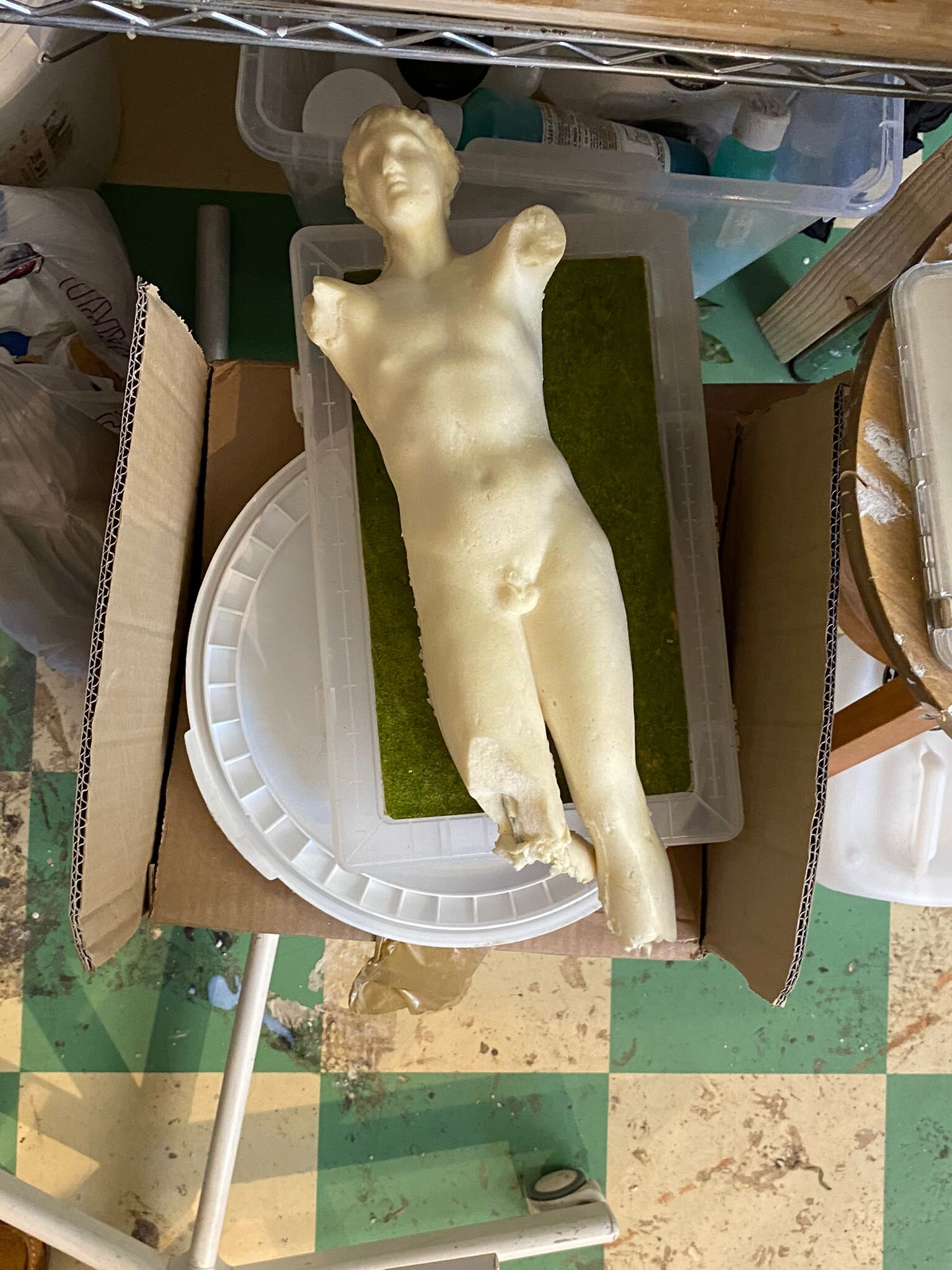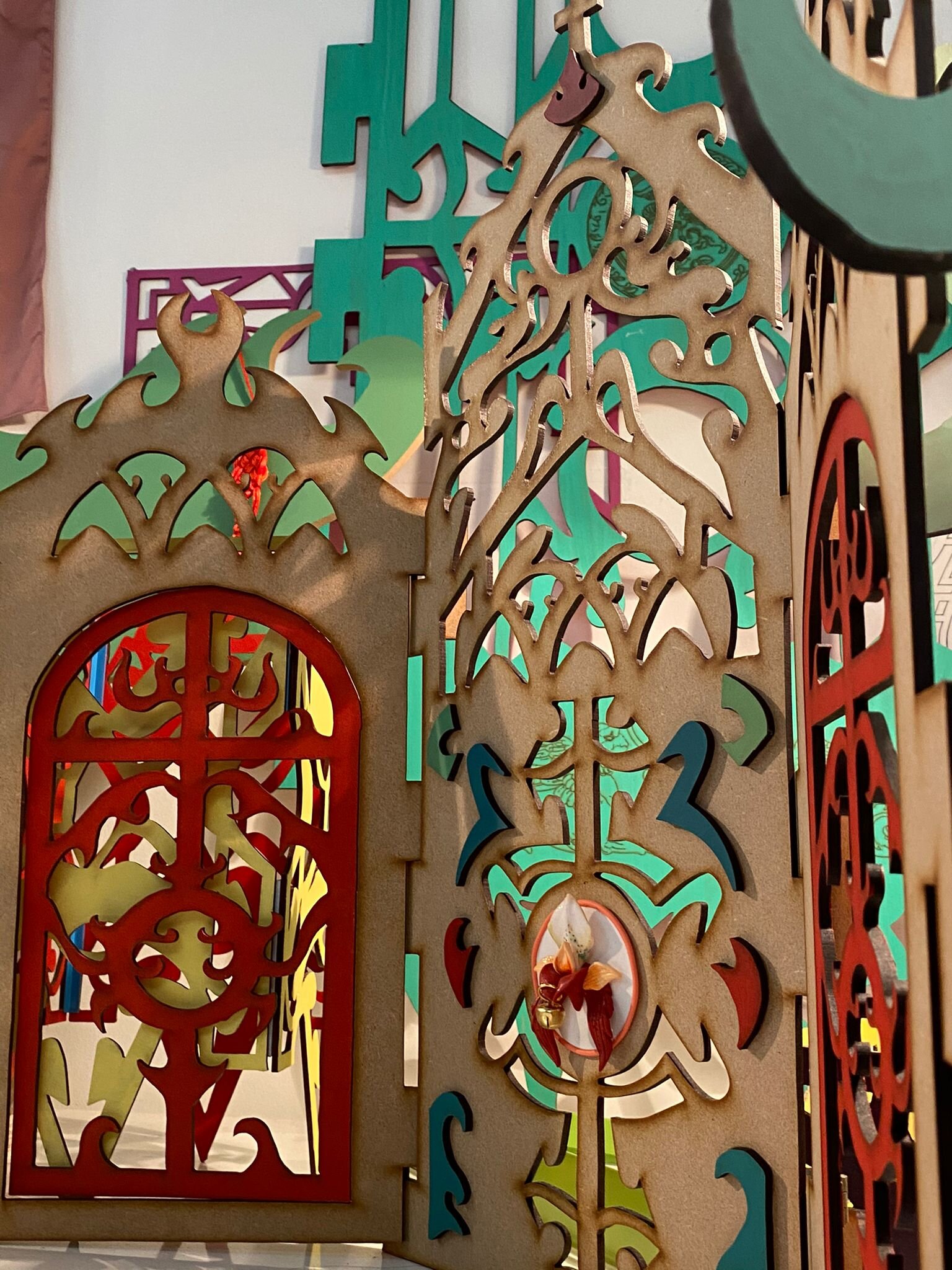Hannah Lim & Hugo Harris — Studio Visit
Walking deep into the residential desert of South Lambeth, with its thousands of rowhouses and little else, you at last come upon the cramped studio space of Hannah Lim and Hugo Harris. Here, their workstations are such that they sit back-to-back, six inches apart from each other. When I arrived, both were working on pieces that would require hunched-over frames and squinting eyes: she on a mold of an elaborate tropical flower, small enough to be the necklace that it would eventually become, and he on several Jesus-like wax figurines about the size of a man’s hand.
The place is cluttered. Work, both complete and otherwise, occupies nearly every available space: a triptych ‘portable altarpiece’ made from medium-density fiberboard in an indelibly chinoiserie style; disembodied wax heads everywhere, some covered in what appear to be parts of a goat’s skull; a male youth in the classical style standing upon a plinth that is covered, again, in chinoiserie motifs. Above all this is a rope, neatly tied, hanging ominously from the ceiling.
“All of my lantern-related, chandelier-like pieces I quite often hang from here” Hannah cheerily tells me.
Her half British, half Singaporean background informs much of her work, which explores the relationship between East and West, of how it’s been reflected in art over time. “I particularly look at chinoiserie and try to reclaim it in a culturally appropriate way.”
It is a refracted approach, something of which she is very conscious. She is British—born and raised here—and when she creates her pieces it is through an understanding that, though straddling both cultures, she is, ultimately, culturally of the West.
Much of her work—described as “furniture-like sculpture”—is rife with elements of Chinese design. Starting by hand and then turning them into digital line drawings on Illustrator, her cutouts on MDF board are marked by sinuous flame-like motifs and the repetitious symmetry that have long been fundamental to the Chinese aesthetic. But is it lifted straight from the shrine of a Fujian temple or from some interior place, a China of the mind? “These objects don’t copy a specific Chinese technique or design, they are derived from it and stripped back.”
Hannah met Hugo at the Edinburgh College of Art, where they both studied sculpture, but he comes from a different place entirely. Looking at his work, you would think that he was obsessed with classical sculpture, but this impression is only tangential to his obsession with the human form, specifically the human form in motion.
“I always go back to antiquity. I like the Renaissance, the way that it was the rediscovery of the human body and that obsession that went along with it.”
He will often make silicone molds of classical sculptures and the fill them with polyurethane foam, a chemical compound that hardens into something white, spongy and malleable. It looks like solid marble but can be bent and squeezed into various positions, playing into his love of motion. If there is a seated man lost in thought, the fat which spills over his beltline can really be emphasized. He also makes wax body parts (severed forearms are as numerous around the studio as the disembodied heads). He even covered Hannah’s face in silicone and made cast of that.
While in art college, he was able to take anatomy lessons at the medical school. Seeing the cross sections of actual human heads and the inner workings of wrists were formative for his work. “Knowing what the inside looks like, you can imitate it in a way that has a more visceral reaction on top.”
At some point in Edinburgh, Hannah and Hugo, a couple, began collaborating, assembling their work into pastiche arrangements. “We had this idea where we would have a conversation through sculpture,” Hugo explains.
With influences so disparate, it strikes one as an odd combination, yet it works well.
When you see one of her chinoiserie screens surrounding a naturalistic wax head, or a classical statue perched atop a Chinese plinth, you are met with nothing less than the true blending of East and West, an art where history and tradition dissolve into something universal.
Hannah goes on, “We have different styles but quite similar tastes. The things that Hugo brings to the collaboration and the things that I bring aren’t what we would do ourselves, but the bit where me meet in the middle is something that we both really enjoy.”
Words by Cameron Saunders






